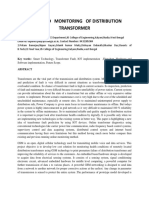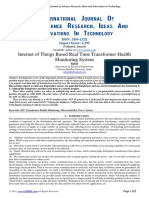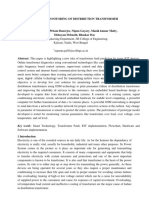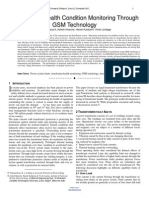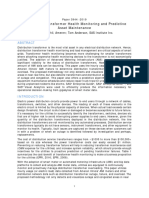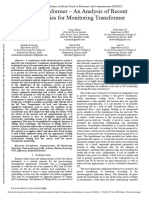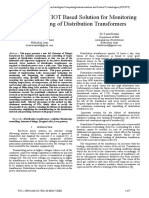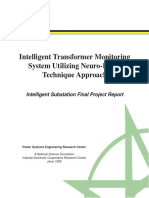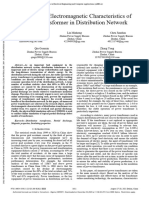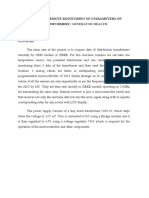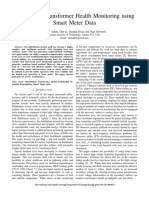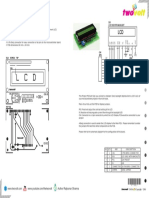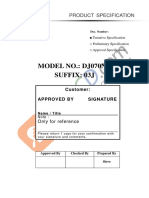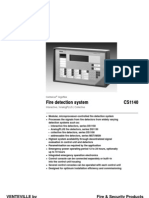0% found this document useful (0 votes)
285 views16 pagesTransformer Health Monitoring System
This document discusses monitoring techniques for distribution transformers. It begins by acknowledging those who provided guidance and support for the project. It then discusses the need for automation in monitoring due to economic factors and the development of technologies like IoT, cloud computing, and smart grids. Real-time monitoring provides more accurate condition assessments and can help utilities better manage transformers. Low-cost monitoring solutions make use of existing sensors and infrastructure to gather data on parameters like voltage, current and temperature.
Uploaded by
Me alag HuCopyright
© © All Rights Reserved
We take content rights seriously. If you suspect this is your content, claim it here.
Available Formats
Download as PDF, TXT or read online on Scribd
0% found this document useful (0 votes)
285 views16 pagesTransformer Health Monitoring System
This document discusses monitoring techniques for distribution transformers. It begins by acknowledging those who provided guidance and support for the project. It then discusses the need for automation in monitoring due to economic factors and the development of technologies like IoT, cloud computing, and smart grids. Real-time monitoring provides more accurate condition assessments and can help utilities better manage transformers. Low-cost monitoring solutions make use of existing sensors and infrastructure to gather data on parameters like voltage, current and temperature.
Uploaded by
Me alag HuCopyright
© © All Rights Reserved
We take content rights seriously. If you suspect this is your content, claim it here.
Available Formats
Download as PDF, TXT or read online on Scribd
/ 16

